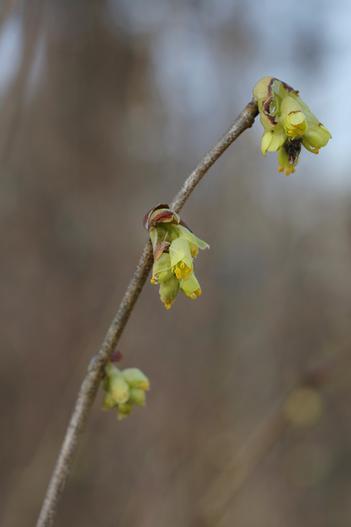Korean Winter Hazel
(Corylopsis coreana)
Korean Winter Hazel (Corylopsis coreana)
/
/

National Institute of Ecology
KOGL Type 1
Image By:
National Institute of Ecology
Recorded By:
Copyright:
KOGL Type 1
Copyright Notice:
Photo by: National Institute of Ecology | License Type: KOGL Type 1 | License URL: http://www.kogl.or.kr/open/info/license_info/by.do | Uploader: Storiated | Publisher: Wikipedia Commons

Estimated Native Range
Summary
Corylopsis coreana, commonly known as Korean Winter Hazel or Korean Spring-hazel, is a deciduous shrub native to the understories of deciduous forests on the Korean Peninsula. It exhibits a moderate growth rate and typically reaches a height and width of 8-15 feet (2.4-4.6 meters). This shrub is noted for its pendulous clusters of fragrant, pale yellow flowers that bloom in early spring before the foliage emerges, adding seasonal interest to the garden. The flowers are considered quite showy, attracting early pollinators. The plant’s leaves are broadly ovate, and its bark is smooth, providing additional textural interest throughout the year.
Korean Winter Hazel is valued for its early spring blooms and ease of maintenance. It is often used in woodland gardens, as a specimen plant, or in shrub borders. It prefers moist, well-drained soils that are rich in organic matter, and it can tolerate a range of soil types including clay, loam, and sandy soils. While it thrives in full sun to part shade, it benefits from some protection from harsh afternoon sun in hotter climates. It is generally free from serious pests and diseases, making it a reliable choice for gardeners. However, it may require protection from strong winds and late frosts that can damage the early blooms.CC BY-SA 4.0
Korean Winter Hazel is valued for its early spring blooms and ease of maintenance. It is often used in woodland gardens, as a specimen plant, or in shrub borders. It prefers moist, well-drained soils that are rich in organic matter, and it can tolerate a range of soil types including clay, loam, and sandy soils. While it thrives in full sun to part shade, it benefits from some protection from harsh afternoon sun in hotter climates. It is generally free from serious pests and diseases, making it a reliable choice for gardeners. However, it may require protection from strong winds and late frosts that can damage the early blooms.CC BY-SA 4.0
Plant Description
- Plant Type: Shrub
- Height: 8-15 feet
- Width: 8-15 feet
- Growth Rate: Slow
- Flower Color: Yellow
- Flowering Season: Spring
- Leaf Retention: Deciduous
Growth Requirements
- Sun: Full Sun, Part Shade
- Water: Medium
- Drainage: Medium
Common Uses
Bird Garden, Border Plant, Fragrant, Low Maintenance, Showy Flowers
Natural Habitat
Deciduous forests on the Korean Peninsula
Other Names
Common Names: Korean spring-hazel
Scientific Names: , Corylopsis coreana, Corylopsis coreana f. pubescens, Corylopsis glabrescens f. pubescens, Corylopsis glabrescens var. coreana, Corylopsis gotoana f. pubescens, Corylopsis gotoana var. coreana, Corylopsis gotoana var. pubescens,
GBIF Accepted Name: